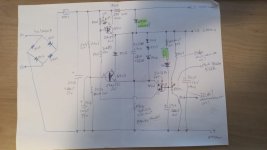VERAULT
Veteran Member
I found in my crypt of stuff an Apple Monitor IIc I thought I had repaired, but marked as bad. Went over the board and replaced some leaky caps. I noticed I replaced the diodes in the bridge rectifier. And I also replaced the potentiometer for setting B+. I vaguely remember it was cracked. After some tweaking I was able to get the sound of highvoltage but no CRT display. I tweaked the new B+ pot and The filament started to glow and the picture came on. I have to all but max the pot out to get the best picture. I may be using the wrong potentiometer. Keep in mind this is the hitachi variant, not the Samsung model which is the only version covered in SAMS computer facts (so Sams is useless for troubleshooting this model CRT)
I watched ADB video here:
But I still dont know what the B+ voltage should be set to or how to properly check it (can it be checked without the CRT board connected as in the video?
Would appreciate some input.
Edit: BTW, I noticed a sligh back off on the B+ pot stops or greatly reduces the waviness that can be so bad on these models. Might just be coincidence.
I watched ADB video here:
Would appreciate some input.
Edit: BTW, I noticed a sligh back off on the B+ pot stops or greatly reduces the waviness that can be so bad on these models. Might just be coincidence.
Last edited:

